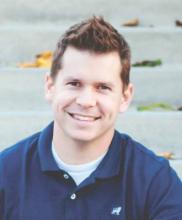BOSTON – Several innovators had the opportunity to present their novel technologies to a five-person “shark tank” panel – two entrepreneurs, a practicing physician, a venture capitalist, and a businessman – at the 2016 AGA Tech Summit.
After the innovators explained why they expected their products to fill an unmet need, the “sharks” probed for weaknesses and offered advice on what data were needed to confirm a viable advantage over existing options.
“These presentations offer a glimpse into what innovators are working on to improve the practice of gastroenterology,” said Michael L. Kochman, M.D., AGAF, one of the “sharks,” who is chair of the AGA Center for GI Innovation and Technology, which sponsored the summit.
“This ‘shark tank’ is a perfect illustration of what the AGA Center for GI Innovation and Technology is all about – we’re here to help move the field forward and discuss what’s next for the care of patients with digestive disorders.”
In addition to Dr. Kochman, the panel comprised Jay Pasricha, M.D., professor of medicine at Johns Hopkins University, who has been involved in several start-ups; Thomas Shehab, MD, a trained gastroenterologist who is now a principal at Arboretum Ventures; Mr. Brian Tinkham, a founder of Beacon Endoscopic and now vice president, New Technologies, GI Solutions, at Medtronic; and Mr. David Pierce, senior vice president at Boston Scientific.
Amenity Health – MedCline™
Amenity Health developed MedCline™ based on the work of Dr. Carl Melcher, as a positional therapy for nocturnal acid reflux in patients with GERD refractory to pharmacologic treatment. As a component of the GERD treatment plan, MedCline™ is a sleeping device designed to raise the torso and facilitate left-side positioning, both of which have been shown to reduce the risk of nocturnal gastroesophageal reflux disease (GERD). Currently, there are five published studies assessing MedCline™ for nocturnal reflux.
“With so many patients still having nighttime reflux even on daily PPIs and growing concerns of long-term side effects of these medications, it’s a perfect time to bring an effective, nonpharmacological treatment to market like MedCline,™” noted Aaron Clark, COO and co-inventor, at Amenity Health.
“We are happy to be offering both patients and physicians a much-needed treatment alternative for nocturnal GERD and are grateful to our research partners for their studies showing that MedCline™ is far more effective at treating nocturnal GERD than bed wedges or propping up the head of the bed,” Mr. Clark said. “We now hope to garner the support of the professional societies and payers to help make MedCline™ more accessible to patients who are in desperate need of nighttime relief.”
All of the sharks agreed that the team at Amenity Health should focus on marketing this device to patients, rather than physicians. Expressing some skepticism about the prospects for third-party reimbursement, all agreed that a direct-to-consumer marketing strategy is needed even if the company can generate more data showing value, such as decreased use of pharmacologic therapy. When told by Mr. Clark that the plan was to market to both physicians and patients, Dr. Pasricha cautioned, “I would require a higher level of evidence [than what was so far presented] before I would recommend it to patients.”
BioInnovate Ireland – Microwave ablation of varices
According to Jonathan Bouchier-Hayes, BSc, MBA, at BioInnovate, current strategies for the treatment of gastroesophageal varices have several limitations. Endoscopic banding, in particular, which is commonly used, requires two to four treatments over several weeks and is associated with a high risk of recurrence. BioInnovate proposes a microwave energy solution integrated into a standard endoscope. By inducing coagulation, the aim of microwave energy is to treat gastroesophageal varices in a single procedure. The advantage of microwave therapy is that it appears to preserve the mucosal layer, reducing the risk of complications associated with endoscopic banding and providing a reduced risk of recurrence. In the experimental studies conducted so far, the fibrosis produced by microwave energy also proved to be a barrier for recurrence. Mr. Bouchier-Hayes believes that the reduction in rebleeding and recurrence will make this approach cost effective. Clinical trials have not yet been initiated.
Several sharks implied that the disadvantages of endoscopic banding, which is widely performed and associated with a relatively low rate of complications, might be less of a concern than was in Mr. Bouchier-Hayes’ analysis of the unmet need, but they were intrigued with this concept if clinical development includes studies that show a cost advantage over current options. To invest, Dr. Shehab reported that he would require a detailed understanding of the specific clinical trials that were planned from which a “go or no-go” decision would be made for further development. Others agreed that it is not just efficacy but economic viability that will be important as development proceeds.



